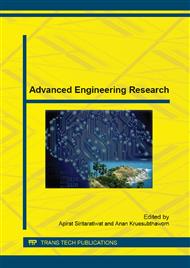p.215
p.219
p.223
p.227
p.231
p.235
p.241
p.245
p.250
Determination of Transition Jitter Noise by Time Domain Analysis
Abstract:
Transition jitter noise can be caused by a variety of factors such as contributions by the medium, head, and drive electronics. In this work, transition jitter noise in magnetic recording is measured based on the time domain analysis. An example of transition jitter noise in perpendicular media is investigated using captured noisy replay signals compare with a reconstructed ideal signal. It is found that transition noise increased with increasing linear density and dropped sharply after the maximum point.
Info:
Periodical:
Pages:
231-234
Citation:
Online since:
August 2015
Authors:
Price:
Сopyright:
© 2015 Trans Tech Publications Ltd. All Rights Reserved
Share:
Citation:


